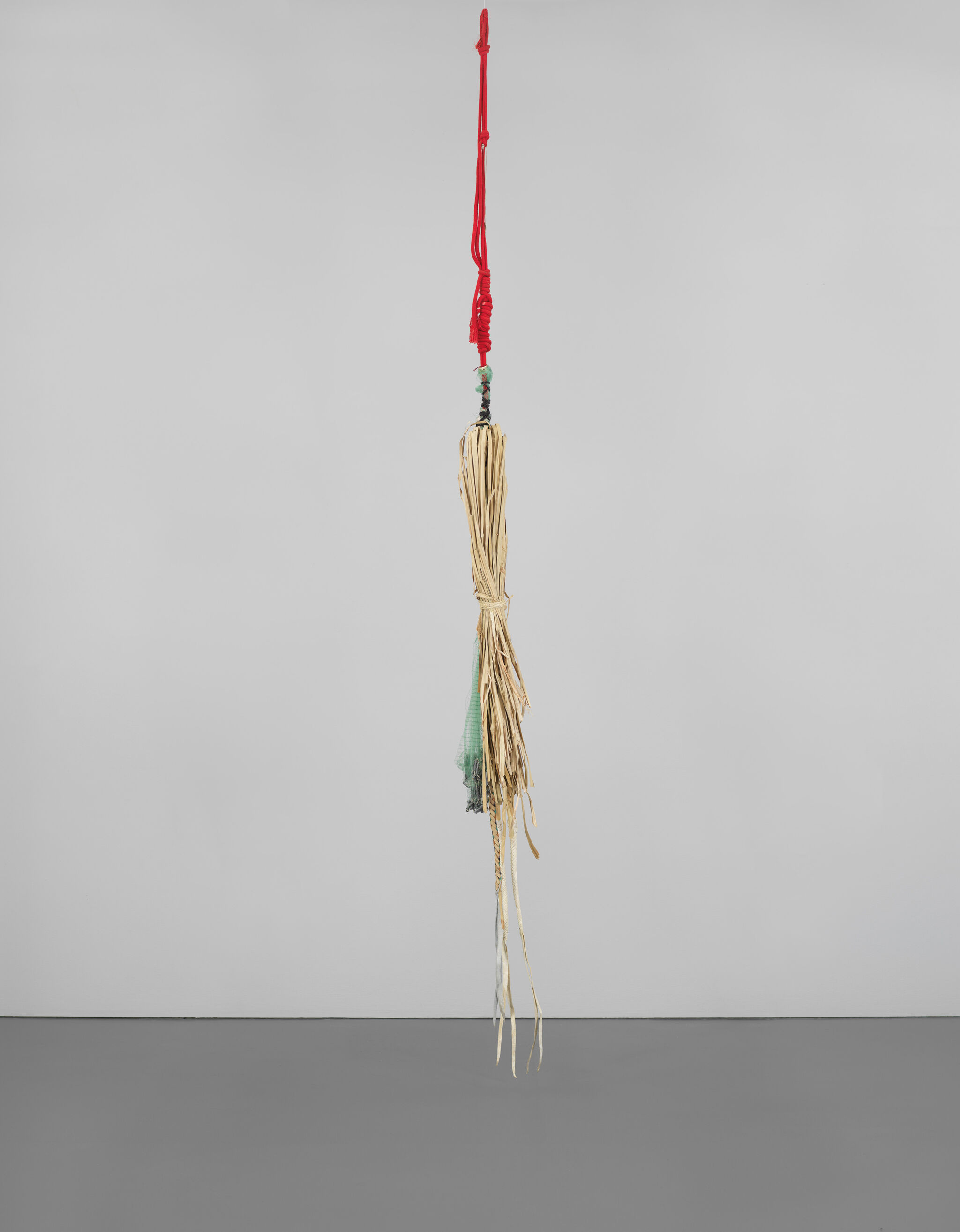Shifting Landscapes | Art & Artists
Earthworks
3
Earth art and ecofeminism—artistic and philosophical movements of the 1960s and 1970s—proposed new frameworks for how we view and experience our shared planet. While Earth art marked a conceptual turn toward engaging directly with the forms of nature and the land, ecofeminism put forward ideas about appreciating and protecting the environment within anticolonial and feminist perspectives. The works in this gallery represent the roots and legacies of these movements, exploring the interconnectivity of the natural world and humanity’s place within it.
Here artists celebrate nature’s vastness and ephemerality in works that stand as artistic counterpoints to human-centered thinking. Some, including Carlos Villa, Gordon Matta-Clark, and Michelle Stuart, deal directly with natural forms and use organic materials or else the landscape itself in diverse ways. Others, such as Nancy Holt, offer more embodied ways of experiencing the world, while still others, including Carolina Caycedo and Maya Lin, draw attention to regionally specific environmental concerns.
Carolina Caycedo
The Binding/El amarre, 2017
Carolina Caycedo’s Cosmotarrayas are created from handmade nets and other objects collected by the artist from residents of Latin American river towns facing environmental damage and economic hardship following the construction of hydroelectric dams, which dramatically alter the landscape and water. Responding to these conditions, Caycedo creates these talismanic assemblages as tributes to activists fighting the dam projects and to those resisting displacement simply by persisting in these villages in the face of diminishing resources. The nets become symbols in Caycedo’s sculptures, affirming a belief in the river as a communal, living force. For the artist, the fishing net (or atarraya) represents the unique connection between fishing communities and the river, embodying knowledge, food sovereignty, and economic autonomy.
Artists
- Robert Adams
- Yuji Agematsu
- Laura Aguilar
- John Ahearn
- Felipe Baeza
- Firelei Báez
- Melvonna Ballenger
- Orian Barki
- Jean-Michel Basquiat
- Meriem Bennani
- María Berrío
- Diane Burns
- Jenny Calivas
- Carolina Caycedo
- Enrique Chagoya
- Tseng Kwong Chi
- Arch Connelly
- Agnes Denes
- Jane Dickson
- Chioma Ebinama
- rafa esparza
- Christina Fernandez
- Teresita Fernández
- Steven Fragale
- LaToya Ruby Frazier
- Dalton Gata
- Aaron Gilbert
- Martine Gutierrez
- Keith Haring
- Bessie Harvey
- Lonnie Holley
- Nancy Holt
- Pao Houa Her
- Donna Huanca
- Peter Hujar
- Suzanne Jackson
- Ulysses Jenkins
- Luis Jimenez
- Michael Joo
- Sonya Kelliher-Combs
- An-My Lê
- Maya Lin
- Miguel Luciano
- James Luna
- Guadalupe Maravilla
- Hiram Maristany
- Leslie Martinez
- Patrick Martinez
- Gordon Matta-Clark
- Keith Mayerson
- Park McArthur
- Ana Mendieta
- Amalia Mesa-Bains
- Mundo Meza
- Alan Michelson
- Troy Michie
- Joe Minter
- Kenji Nakahashi
- Martha Jane Pettway
- Piliāmo‘o
- Piliāmo'o
- Chuck Ramirez
- Sophie Rivera
- Alison Saar
- David Benjamin Sherry
- Trevor Shimizu
- Nicole Soto Rodríguez
- Anita Steckel
- Michelle Stuart
- Kunié Sugiura
- Tabboo!
- Salman Toor
- Rigoberto Torres
- Theo Triantafyllidis
- Artie Vierkant
- Carlos Villa
- Emmi Whitehorse
- Martin Wong
- Purvis Young

